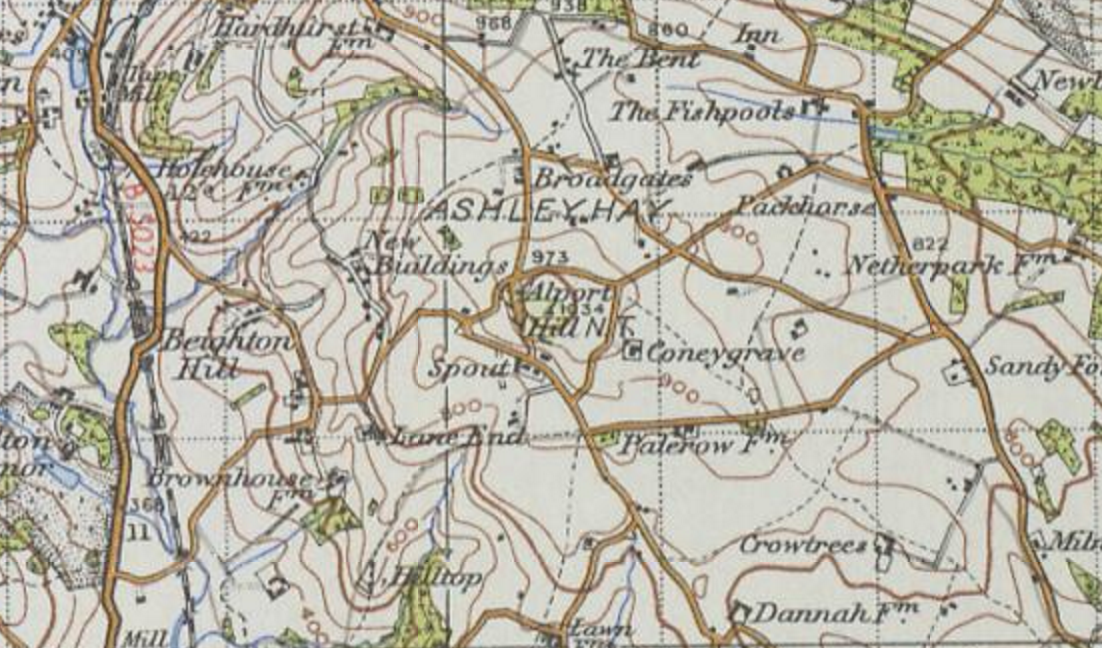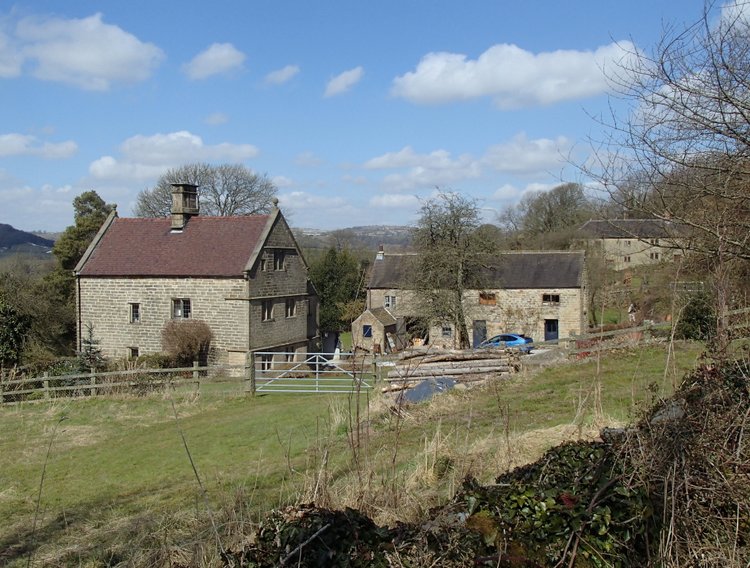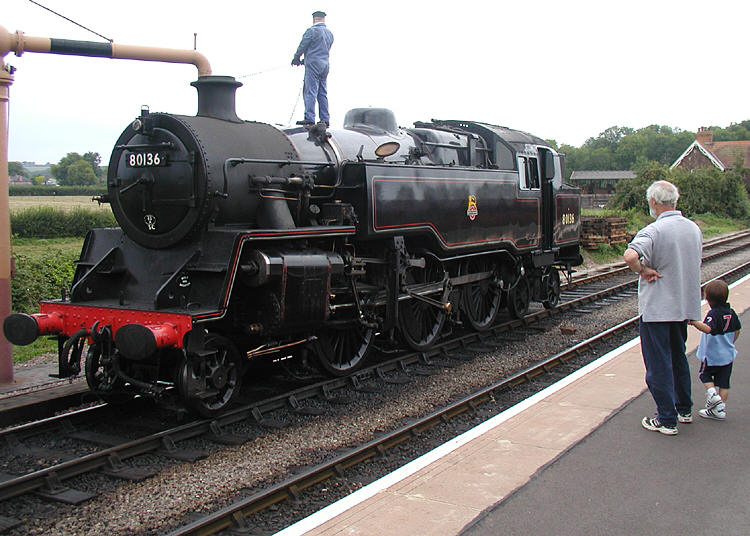|
Ashleyhay
Ashleyhay ( Old English ''Enclosure at the ash-tree wood or clearing'' ) is a village and civil parish in the Amber Valley district of Derbyshire, England, about five miles north-west of Belper. It is also situated one and three-quarters of a mile south of Wirksworth and eleven miles north of Derby city centre. According to the 2001 census it had a population of 105, increasing to 118 at the 2011 Census. History In 1870–72 John Marius described Ashleyhay as:"a township in Wirksworth parish, Derby; 1 mile SE of Wirksworth. Pop., 232. Houses, 49."According to A Topographical Dictionary of England (Lewis,S 1829) Ashelyhay township was included within Wirksworth Parish. "There is also a manor within the parish, which has no courts, called the Holland, or Richmond, manor, granted in 1553, by the crown, to Ralph Gell. The parish comprises 14,022''a''. 3''r''. 20''p''., and includes the chapelries of Alderwasley and Cromford; the townships of Ashley-Hay, Biggin, Hopton, Ible, an ... [...More Info...] [...Related Items...] OR: [Wikipedia] [Google] [Baidu] |
Listed Buildings In Ashleyhay
Ashleyhay is a civil parish in the Amber Valley district of Derbyshire, England. The parish contains ten listed buildings that are recorded in the National Heritage List for England The National Heritage List for England (NHLE) is England's official database of protected heritage assets. It includes details of all English listed buildings, scheduled monuments, register of historic parks and gardens, protected shipwrecks, an .... All the listed buildings are designated at Grade II, the lowest of the three grades, which is applied to "buildings of national importance and special interest". The parish contains the village of Ashleyhay, and is otherwise rural. The listed buildings consist of farmhouses and farm buildings, houses and cottages, and a chapel. __NOTOC__ Buildings References Citations Sources * * * * * * * * * * * {{DEFAULTSORT:Ashleyhay Lists of listed buildings in Derbyshire ... [...More Info...] [...Related Items...] OR: [Wikipedia] [Google] [Baidu] |
Amber Valley
Amber Valley is a local government district and borough in the east of Derbyshire, England, taking its name from the River Amber. It covers a semi-rural zone with four main towns whose economy was based on coal mining and remains to some extent influenced by engineering, distribution and manufacturing, holding for instance the headquarters and production site of Thorntons confectionery. The seat in the House of Commons of Amber Valley is of smaller scope. The population at the 2011 Census was 122,309. The village of Crich and other parts of the district were the setting for ITV drama series '' Peak Practice''. Towns of Amber Valley * Alfreton *Belper *Heanor *Ripley Main villages of Amber Valley * Ambergate * Codnor * Crich * Denby * Duffield * Heage * Holbrook * Horsley * Horsley Woodhouse * Kedleston * Kilburn * Langley Mill * Lea & Holloway * Mackworth * Milford * Quarndon * Riddings * Smalley * Somercotes * Swanwick * Whatstandwell The district was formed on 1 ... [...More Info...] [...Related Items...] OR: [Wikipedia] [Google] [Baidu] |
Alderwasley
Alderwasley ( ) is a village and civil parish in the Amber Valley district of Derbyshire, England. The population of the civil parish as of the 2011 census was 469. Alderwasley Hall is the home to one of the sites of Alderwasley Hall School which is a special school for children and young people with Aspergers and/or Speech and Language Difficulties. It is about six miles north of Belper. The village's name derives from the Old English for "clearing near alluvial land growing with alders". In the Middle Ages, it was a manor within Duffield Frith and contained the Royal Park of Shining Cliff Woods and a later park was formed to the south called Bradley Laund. In 1284 the Shining Cliff was given to William Foun by Edmund Crouchback, Earl of Lancaster. Foun was given the job of maintaining the boundaries between the Pendleton and Peatpits Brooks. This passed to Thomas Lowe by marriage in 1471. His son Anthony Lowe, as gentleman of the bedchamber for Henry VIII, was made a her ... [...More Info...] [...Related Items...] OR: [Wikipedia] [Google] [Baidu] |
English Place Name Society
The English Place-Name Society (EPNS) is a learned society concerned with toponomastics and the toponymy of England, in other words, the study of place-names ( toponyms). Its scholars aim to explain the origin and history of the names they study, taking into account factors such as the meaning of the elements out of which they were created (whether from the principal endemic tongues Old English, early Welsh, Danish, Norwegian, Cornish, Latin, Norman French – or others); the topography, geology and ecology of the places bearing the names; and the general and local history and culture of England. History In 1922 Professor Allen Mawer read a paper to the British Academy about setting up an English place-name survey. He obtained the formal and financial support of the Academy. Within a year he had brought into being a society composed of interested persons, provided it with a constitution and laid down the lines of its future conduct. The headquarters of the Society were ... [...More Info...] [...Related Items...] OR: [Wikipedia] [Google] [Baidu] |
Alport Height
Alport Height is a hill near Wirksworth in Derbyshire. It is a popular picnic site, since it has extensive views to the South, and is the first hill over within easy reach of the Derby area. Like Shining Cliff Woods, 2 km to the east, it is in the care of the National Trust. It was one of their first acquisitions in Derbyshire, acquired in 1930. It is possible to see Derby city centre from the summit, as well as The Wrekin, the Long Mynd, and the Clee Hill. It is also possible to see the Sutton Coldfield and Lichfield masts, and the Birmingham city centre skyline, and also the Lickey Hills just beyond Birmingham. The Pye Green BT Tower on Cannock Chase can also be seen. There are eight radio masts and associated buildings in a compound on the summit (not on Trust land). The hill is sometimes known as Alport Stone after the name of the conspicuous pillar of quarried gritstone, some high, near its summit. The boulder has 3 or 4 recognised climbing routes up it, one being ... [...More Info...] [...Related Items...] OR: [Wikipedia] [Google] [Baidu] |
Villages In Derbyshire
A village is a clustered human settlement or community, larger than a hamlet but smaller than a town (although the word is often used to describe both hamlets and smaller towns), with a population typically ranging from a few hundred to a few thousand. Though villages are often located in rural areas, the term urban village is also applied to certain urban neighborhoods. Villages are normally permanent, with fixed dwellings; however, transient villages can occur. Further, the dwellings of a village are fairly close to one another, not scattered broadly over the landscape, as a dispersed settlement. In the past, villages were a usual form of community for societies that practice subsistence agriculture, and also for some non-agricultural societies. In Great Britain, a hamlet earned the right to be called a village when it built a church. [...More Info...] [...Related Items...] OR: [Wikipedia] [Google] [Baidu] |
Civil Parishes In Derbyshire
{{disambiguation ...
Civil may refer to: *Civic virtue, or civility *Civil action, or lawsuit * Civil affairs *Civil and political rights *Civil disobedience *Civil engineering *Civil (journalism), a platform for independent journalism *Civilian, someone not a member of armed forces *Civil law (other), multiple meanings * Civil liberties *Civil religion *Civil service *Civil society *Civil war *Civil (surname) Civil is a surname. Notable people with the surname include: *Alan Civil (1929–1989), British horn player *François Civil (born 1989), French actor * Gabrielle Civil, American performance artist * Karen Civil (born 1984), American social media a ... [...More Info...] [...Related Items...] OR: [Wikipedia] [Google] [Baidu] |
Old English
Old English (, ), or Anglo-Saxon, is the earliest recorded form of the English language, spoken in England and southern and eastern Scotland in the early Middle Ages In the history of Europe, the Middle Ages or medieval period lasted approximately from the late 5th to the late 15th centuries, similar to the post-classical period of global history. It began with the fall of the Western Roman Empire .... It was brought to Great Britain by Anglo-Saxon settlement of Britain, Anglo-Saxon settlers in the mid-5th century, and the first Old English literature, Old English literary works date from the mid-7th century. After the Norman conquest of 1066, English was replaced, for a time, by Anglo-Norman language, Anglo-Norman (a langues d'oïl, relative of French) as the language of the upper classes. This is regarded as marking the end of the Old English era, since during this period the English language was heavily influenced by Anglo-Norman, developing into a phase know ... [...More Info...] [...Related Items...] OR: [Wikipedia] [Google] [Baidu] |
Heritage Railway
A heritage railway or heritage railroad (US usage) is a railway operated as living history to re-create or preserve railway scenes of the past. Heritage railways are often old railway lines preserved in a state depicting a period (or periods) in the history of rail transport. Definition The British Office of Rail and Road defines heritage railways as follows:...'lines of local interest', museum railways or tourist railways that have retained or assumed the character and appearance and operating practices of railways of former times. Several lines that operate in isolation provide genuine transport facilities, providing community links. Most lines constitute tourist or educational attractions in their own right. Much of the rolling stock and other equipment used on these systems is original and is of historic value in its own right. Many systems aim to replicate both the look and operating practices of historic former railways companies. Infrastructure Heritage railway line ... [...More Info...] [...Related Items...] OR: [Wikipedia] [Google] [Baidu] |
Duffield, Derbyshire
Duffield is a village in the Amber Valley district of Derbyshire, north of Derby. It is centred on the western bank of the River Derwent at the mouth of the River Ecclesbourne. It is within the Derwent Valley Mills World Heritage Area and the southern foothills of the Pennines. History Early history There have been humans in the area, probably, from the Iron Age. A palaeolithic hand axe has been discovered near the head of the River Ecclesbourne at Hopton. In the Duffield area itself, settlement by the Celts occurred in 400BCE. Although it has been suggested that, once farming began, they would have inhabited the plains of the Derwent and Ecclesbourne, they would most likely have retreated to higher ground during the winter floods. The Romans arrived in the area in 43CE. It has been suggested that they built a fort to protect the ford across which the caravans of lead from Wirksworth joined Rykneld Street at Derby, en route for the North Sea ports, though this is disput ... [...More Info...] [...Related Items...] OR: [Wikipedia] [Google] [Baidu] |
Alport Stone
Alport Height is a hill near Wirksworth in Derbyshire. It is a popular picnic site, since it has extensive views to the South, and is the first hill over within easy reach of the Derby area. Like Shining Cliff Woods, 2 km to the east, it is in the care of the National Trust. It was one of their first acquisitions in Derbyshire, acquired in 1930. It is possible to see Derby city centre from the summit, as well as The Wrekin, the Long Mynd, and the Clee Hill. It is also possible to see the Sutton Coldfield and Lichfield masts, and the Birmingham city centre skyline, and also the Lickey Hills just beyond Birmingham. The Pye Green BT Tower on Cannock Chase can also be seen. There are eight radio masts and associated buildings in a compound on the summit (not on Trust land). The hill is sometimes known as Alport Stone after the name of the conspicuous pillar of quarried gritstone, some high, near its summit. The boulder has 3 or 4 recognised climbing routes up it, one being a ... [...More Info...] [...Related Items...] OR: [Wikipedia] [Google] [Baidu] |





